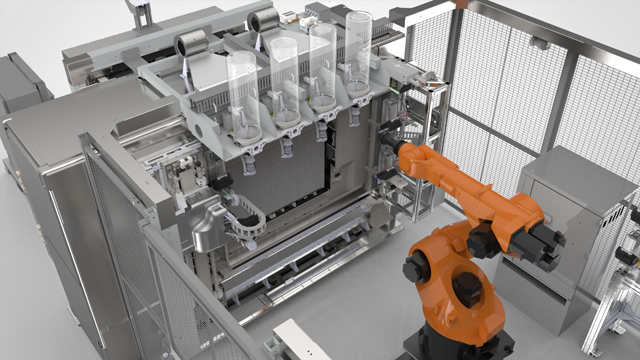Making aircraft parts on 3D printers is becoming increasingly popular, despite several stubborn constraints. Among the most limiting features are the laptop computer-sized dimensions of the 3D-printing machines. Coupled with a relatively plodding material lay-down rate, 3D printers are confined to making only the smallest and usually most intricate parts in the aerospace catalogue.
Stratasys, a pioneer in 3D printing since the mid-1980s, thinks it may have solved part of the technology’s size constraint. The Minneapolis- and Tel Aviv-based company has unveiled a demonstrator for a new 3D printer with an “unlimited” capacity for length-wise deposition of thermoplastic composites.
This “Infinite Build 3D demonstrator” can build 101cm (40in) in width, 76.2cm in height and any length relevant to commercial aircraft parts. In an industry that builds aircraft characterised by long fuselage tubes, Stratasys has already attracted attention.
Indeed, Boeing Research and Technology has signed a memorandum of understanding with Stratasys to collaborate on the new printing technology. As part of the agreement, Boeing will install an Infinite Build demonstrator in one of its research facilities, helping Stratsys and its own employees get comfortable with 3D printers of this scale.
Meanwhile, Stratasys used the demonstrator machine to print a single-piece panel of an aircraft cabin interior, which dramatically reveals the larger geometries made possible by the Infinite Build printer.
Stratasys developed the machine with a simple concept: take an existing 3D printer, and lay the extrusion mechanism on its side. Instead of printing a part from bottom to top, it prints longitudinally along the y-axis.
The machine is built to use qualified aerospace systems. So far, the demonstrator is only able to handle thermoplastic resins with lower-strength chopped carbonfibre, although company officials say they are working on developing an end-effector capable of working with continuous carbonfibre. Chopped carbonfibre limits the Infinite Build demonstrator to tertiary aircraft parts, such as aircraft cabins and composite tooling jigs.

Length-wise production technique gives Stratasys demonstrator an unlimited capacity
Stratasys
The completed interior panel started as thousands of micro-pellets containing Ultem 9085 material, which is qualified for use in aircraft cabins. The pellets are fed into a screw extruder, which deposits the material at melted temperatures in layers 0.07in thick, says Jim Orrock, director of materials development for Stratasys.
By replacing Ultem 9085 with another material – Ultem 1010 – Stratasys can print large moulds for unsophisticated composite materials. Mike Hayes, Boeing’s director for additive manufacturing, notes that some composite applications still deserve more sophisticated tooling materials, such as the moulds for the 777X composite wing skins. “You’re going to pay the money for an inbar tool,” Hayes says.
But the Stratasys machine, if successful, could provide a low-cost alternative in many applications for composite aircraft parts. “These little cheap plastic tools work really, really nice. Tooling doesn’t make us money. Tooling is an expense and we’re trying to save the expense,” Hayes says. “It’s not the sexy part of 3D printing, but it pays the bills, and allows us to keep working on it.”
As the development of chopped carbonfibre-thermoplastic composite applications mature, Boeing could use the Stratasys printers for cabin interiors, says Teri Finchamp, director of operations and quality at Boeing Phantom Works.
“Interiors is going to be a huge market,” Finchamp says. “With 3D printers, we can give the customers what they’re asking for.”
The next step in the evolution of the Stratasys technology is the transition from printing thermoplastics with chopped carbonfibre to high-strength continuous fibre, making the material suitable for secondary and primary aircraft structure. Stratasys has not set a timeline on developing the next version of the machine, but there are obvious advantages. Unlike the thermoset composites used in, for example, the 787 fuselage and wing, thermoplastic composites can deform and reform, rendering them better suited to tolerate damage. Manufacturers can than reduce the thickness of the material, potentially making aircraft lighter and more efficient.
Asked if Boeing considers the Infinite Build machine capable of replacing thermoset composites, Finchamp says: “Yes, definitely. Not all application will be able to do that. But, yes, definitely.”
Source: Cirium Dashboard



















